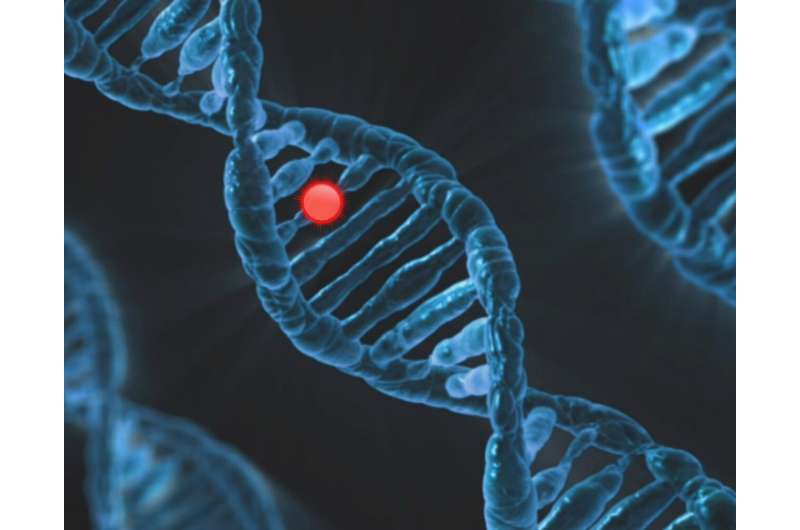This article has been reviewed according to Science X's editorial process and policies. Editors have highlighted the following attributes while ensuring the content's credibility:
fact-checked
peer-reviewed publication
trusted source
proofread
Research reveals how breast cancer gene mutations may impact cell communication

New Cleveland Clinic research reveals how BRCA1 and BRCA2 gene mutations may impact cell communication in breast tissue, furthering the understanding of how cancer develops.
The findings, published in Molecular Cancer Research, provide a foundation for personalized approaches to prevent and treat breast cancer based on a patient's genetics. The discovery paves the road for future studies of the process where normal cells become cancerous in BRCA1- and BRCA2-deficient breast tissue.
Women with BRCA1 and BRCA2 mutations have up to a 72% lifetime risk of developing breast cancer by age 80. Many opt for preventative mastectomies due to limited alternatives.
"To develop alternative non-surgical options, we first need to unravel the processes driving healthy breast tissue to become cancerous," said Mihriban Karaayvaz, Ph.D., of Cleveland Clinic's Genomic Medicine Institute. "Studying cell communication in high-risk breast tissues can tell us how surrounding cells may help a tumor form and reveal new druggable targets."
Dr. Karaayvaz's team, led by the study's first author and former research technician Anthony Caputo, analyzed signaling between cells using breast tissue samples from Cleveland Clinic's biorepository. They compared tissue from women with and without BRCA mutations. The researchers found significant differences in how BRCA-deficient cells communicated with surrounding cells compared to non-mutated samples.
Cells in the body maintain constant communication. They alert each other of changes in the environment, maintain coordination across the tissue, and ensure organs successfully perform their tasks. When this signaling is altered, some cells in an organ can act abnormally compared to the rest of the body. If not corrected, the abnormal behavior can turn the cells cancerous.
The researchers showed the direction of communication is flipped in breast tissue with BRCA1/2 mutations when compared to healthy breast tissue. In healthy breasts, stromal cells located in the fatty connective tissue send more signals to epithelial cells (the cell type more likely to become cancerous in most forms of breast cancer). In breast tissue with BRCA1/2 mutations, epithelial cells send more signals to stromal cells.
The team also discovered signaling differences between BRCA1- and BRCA2-deficient mammary cells. These previously unidentified changes may be associated with subtypes of breast cancer that mutation carriers can develop.
Women with BRCA1 mutations are more likely to develop triple-negative breast cancer, which is far more difficult to treat. BRCA2 mutations predispose women to luminal breast cancer, which is less aggressive.
"Others have studied how BRCA1/2 mutations affect specific cell types, but to our knowledge we are among the first to ask how changes in one cell type impact the surrounding cells in the high-risk breast microenvironment," said Dr. Karaayvaz.
More information: Anthony Caputo et al, Spatial transcriptomics suggests that alterations occur in the preneoplastic breast microenvironment of BRCA1/2 mutation carriers, Molecular Cancer Research (2023). DOI: 10.1158/1541-7786.MCR-23-0489


















